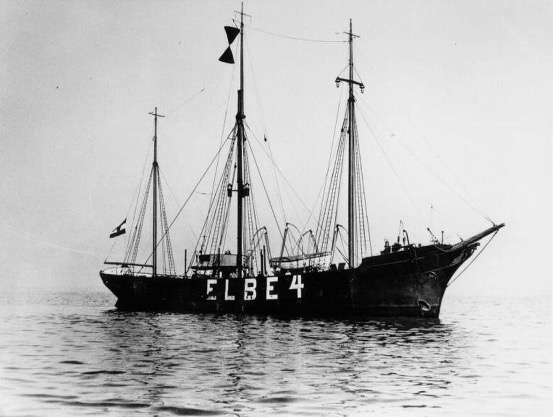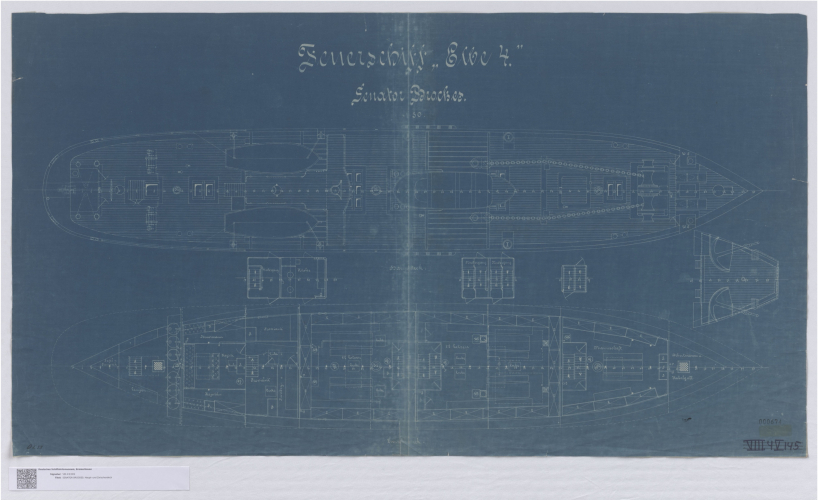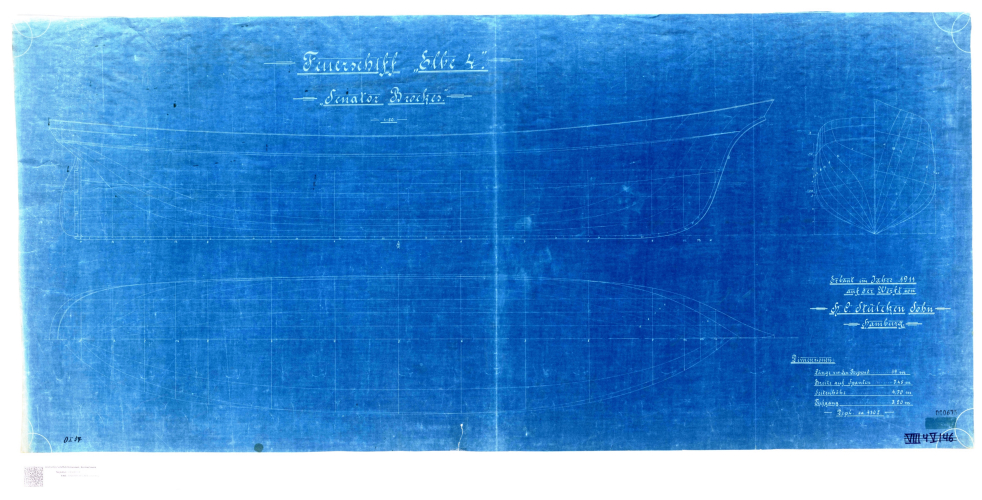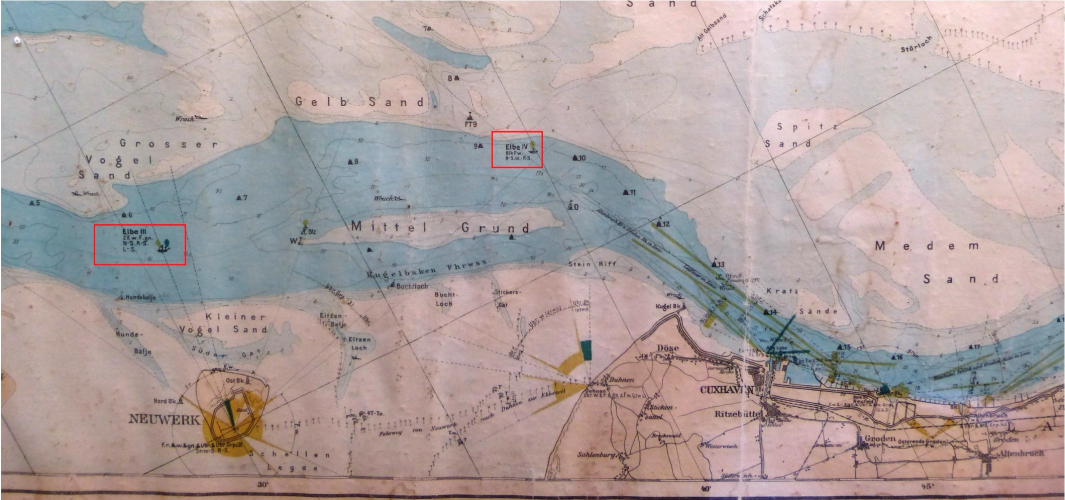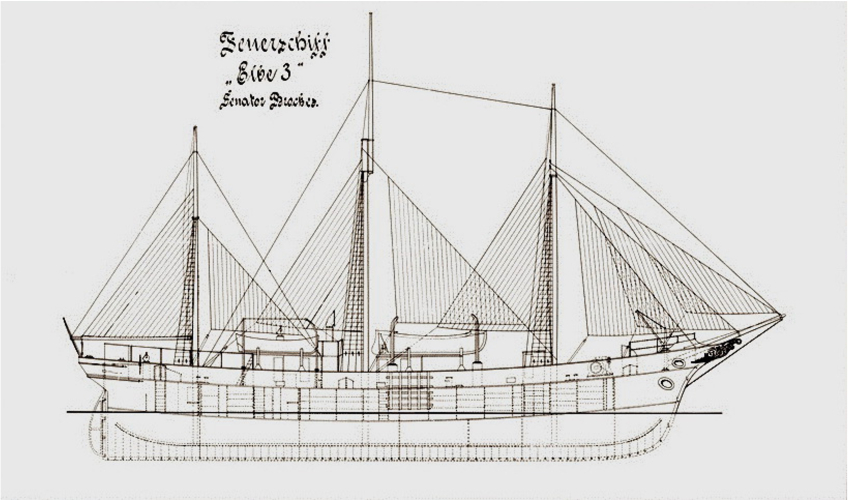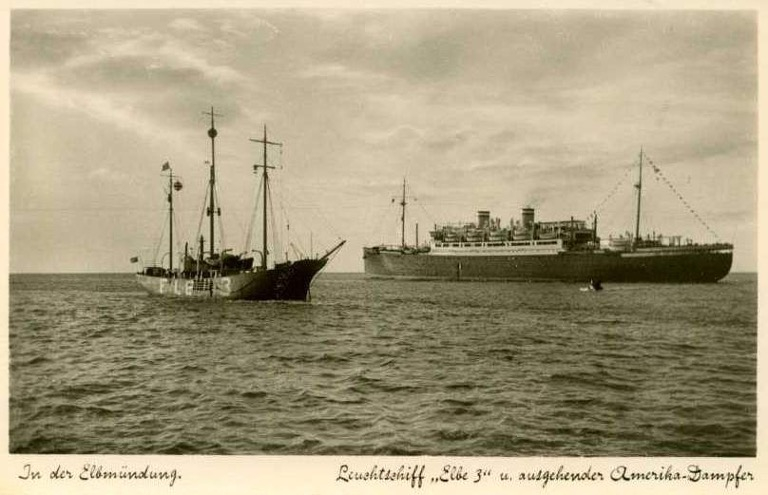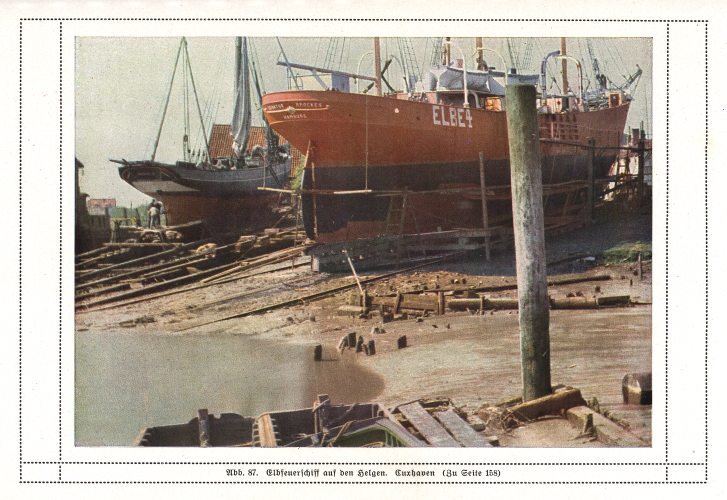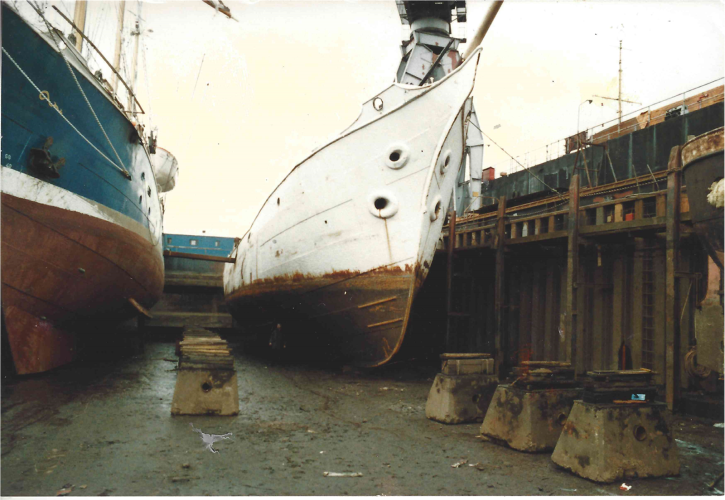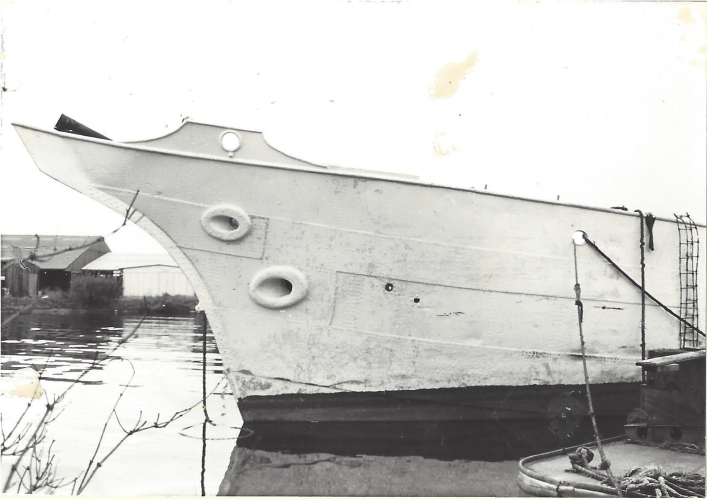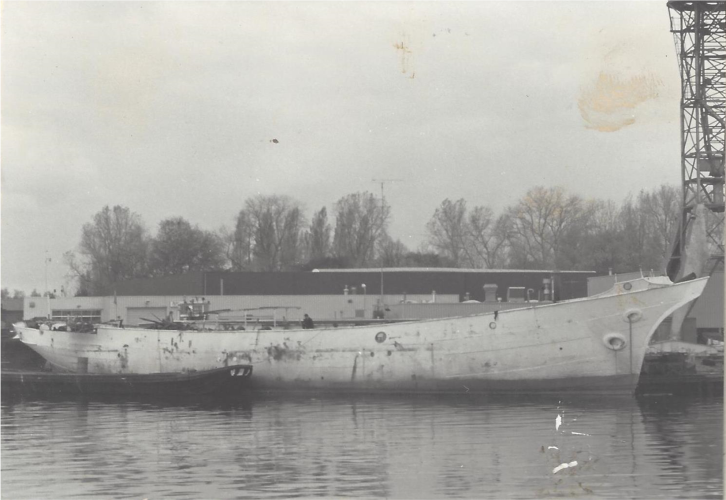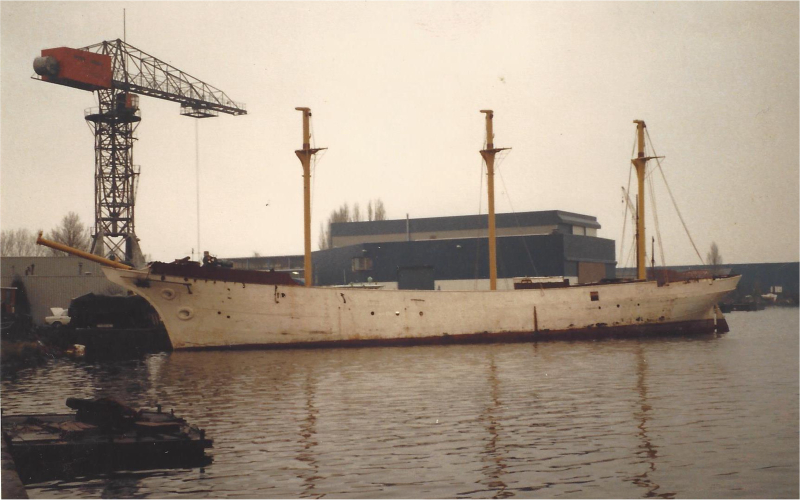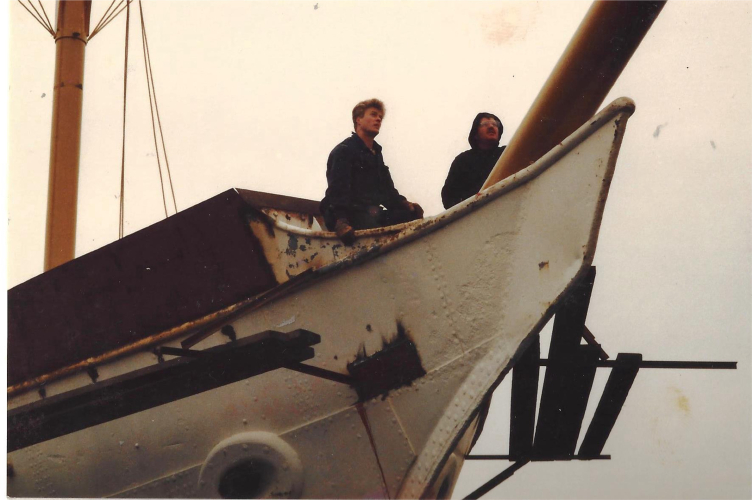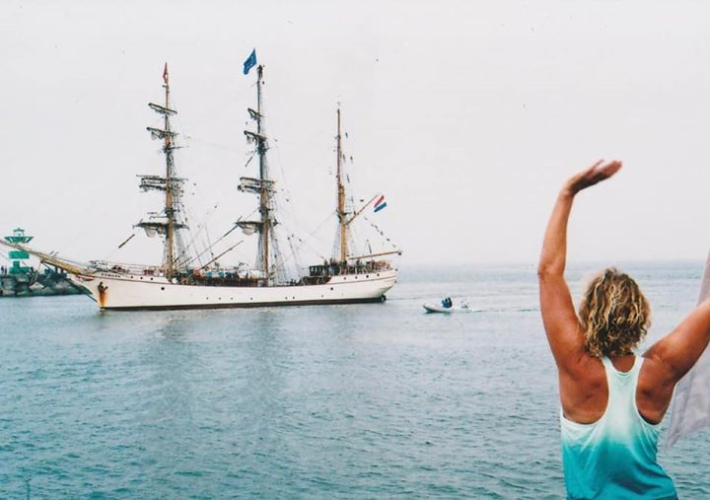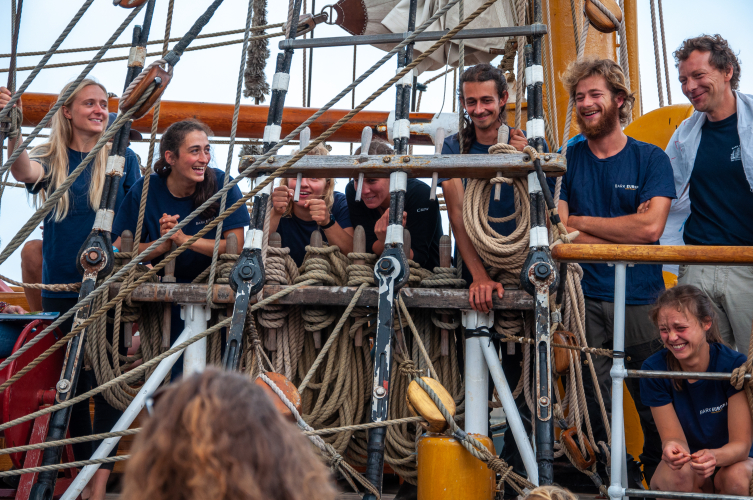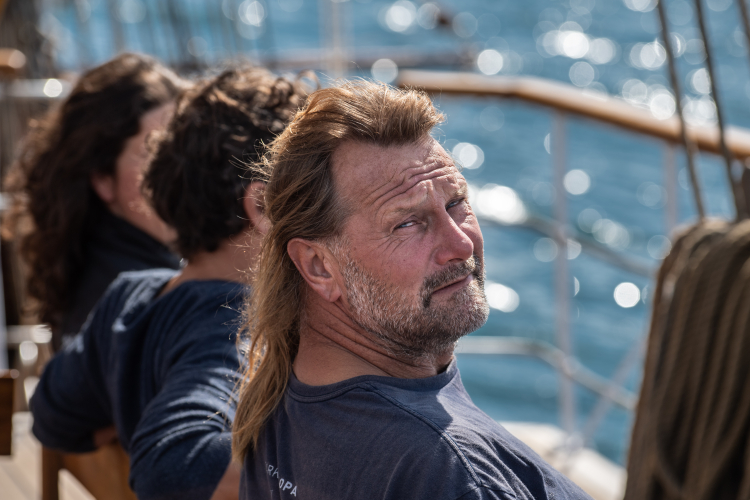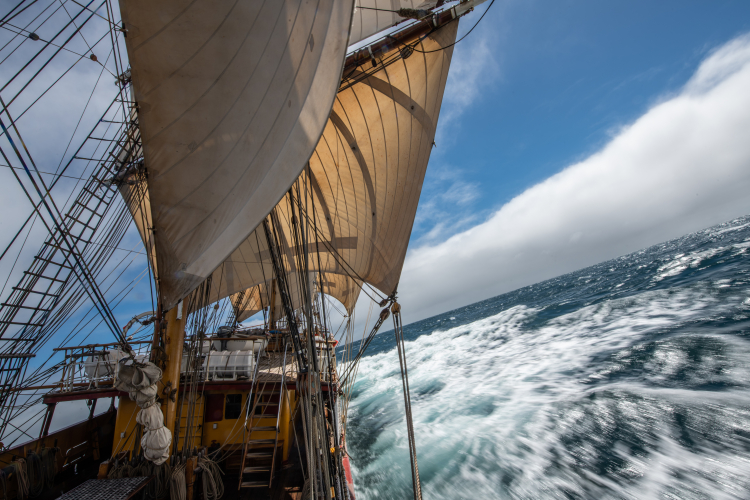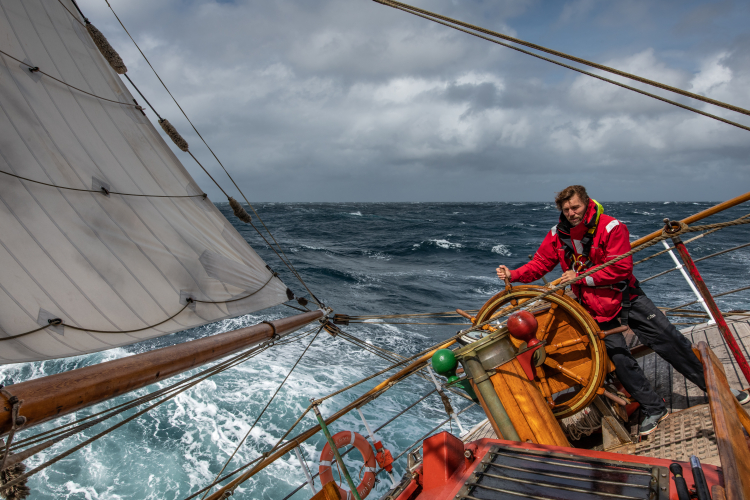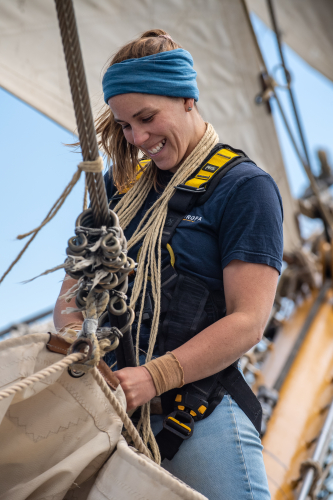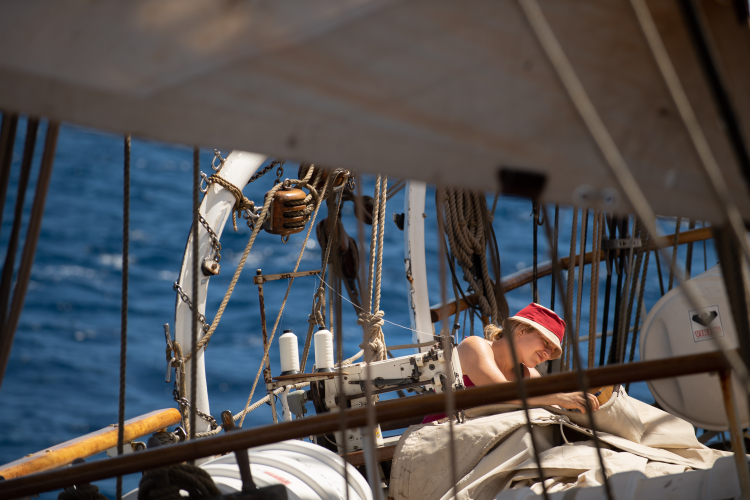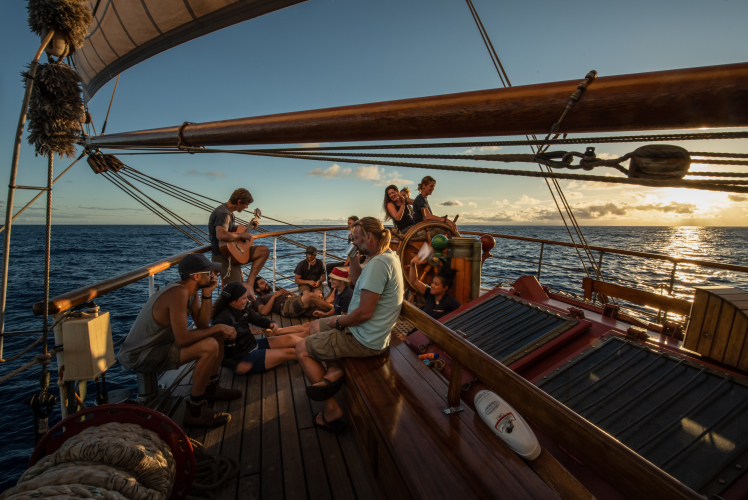The history of Bark EUROPA
The ship
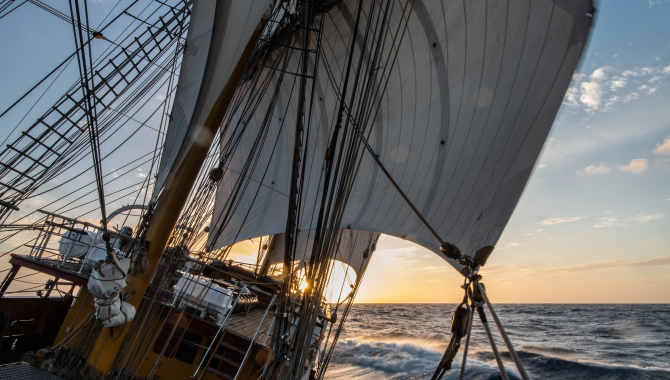
Bark EUROPA was built in 1911 on the Stulcken wharf in Hamburg, Germany. She was first named as 'Senator Brockes'. Ordered by the State of Hamburg, the ship was built to serve as a light ship on the German river Elbe.
1911: The birth of Senator Brockes
The story of Bark EUROPA begins in 1911 at the Stülcken shipyard in Hamburg, where she was built under construction number 409. Originally named Senator Brockes, the ship was destined to serve as a lightship, stationed at Elbe 4. Her namesake, Barthold Heinrich Brockes, was a German poet and writer who traveled extensively through Western Europe in his youth and later became a member of the Hamburg Senate in 1720. The original plans for the ship, preserved in the Maritime Museum of Bremerhaven, show a robust anchor winch system, with chains running along the deck to midship. At present, this location is where EUROPA's galley is situated.
In her early years, Senator Brockes had only storm sails and served as a lightship north of MIttelgrund, anchoring in an area where (sailing) ships often needed tugboat assistance and a rising tide to navigate the Elbe river toward Hamburg. The foredeck of the lightship was already in place, though the raised aft deck – now used for navigation – was only added later when she was repurposed in the Netherlands for sail training with guests.
1914-1918: The trials of war and the Elbe 3 position
From 1911 to 1914 she served as ELBE 4. During the war years, lightships like ELBE 4 were withdrawn to Cuxhaven to make it harder for the Allies to navigate these waters. At that time, she had no engine, no generator and no electricity. The ship was illuminated by oil lamps, later replaced by gas lighting. Her crew consisted of 12 to 16 men. After World War 1 she was assigned the ELBE 3 position, north of the isle of Neuwerk, where she would remain for decades.
The ships’ ice-class hull was essential for her survival in the harsh conditions of the Elbe River in that time. In those days, the river carried much more ice, unlike today where industrial processes tend to warm river waters. The lightships had to be built strong enough to withstand these cold, icy conditions. She was also rigged with sails in case conditions were no longer bearable and escape was needed.
1937-1970: Rebuilding for pilots and navigation tests
In 1937 ELBE 3 was refitted to accommodate 10 pilots in addition to her regular crew. By the 1970’s, she was serving as a reserve lightship (under the number P8) and was often used to test modern navigation equipment, still without an engine, but now equipped with a generator for electricity.
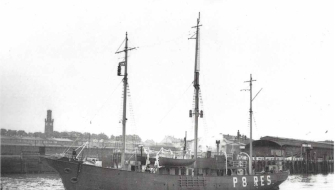
1986: A new life in Zaandam
In 1986 a new chapter in the ship’s life began when Harry Smit purchased the hull, with the vision of transforming her into a fully operational sailing ship. Over the course of eight years, the ship underwent a major restoration at shipyards in Amsterdam, at ‘Zouthaventje’ and in Zaandam at shipyard Wed. Brouwer.
Harry was a passionate restorer of traditional ships. He not only rebuilt the vessel itself, but also collected parts from demolition yards that could be reused. Many parts that were installed on Europa came from minesweepers, ferries and riverboats. Within 8 years, Harry was able to build his dream and breathe new life into the ship: a classic barque with international certificates ready to sail the world’s oceans.
Harry worked with skilled professionals such as Hoek Design (for design and drawings), George Ording (rigger and blockmaker) and Piet Dekker (ship carpenter), but also with conscientious objectors who, even after completing their alternative service, often continued to assist in the restoration.
Initially, Harry intended to charter or sell the ship to the Landmark School in Massachusetts, a school that used large sailing yachts for students with dyslexia. However, when the school abandoned its ‘school at sea’ project, Europa was transformed into a sail training vessel capable of accommodating 64 sailors. In 1994, she was officially reborn as Bark EUROPA and began her second life - not as a passenger ship, but as a special-purpose ship for sail training.
1994: Reborn as EUROPA
Over the years, EUROPA has become a beloved icon in the maritime world, participating in Tall Ship events, ocean crossings and Antarctica expeditions. Bark EUROPA was present at Sail Amsterdam in 1995, 2000, 2005, 2015 and 2025.
In the late 1990’s additional sky and studdingsails were added to her rigging and by 2000 she and her crew had gained enough experience in European waters to begin global voyages.
2000: Voyages around the world
One of her most famous voyages took place from 2001 until 2003 when she sailed through the Pacific to Japan and Korea. The return voyage brought her to the west coast of Canada and the USA and then rounding Cape Horn for the first time, sailing from San Diego to Port Stanley with only one stop at Easter Island. The world voyage ended in St. Malo (France) where she was invited for the last gathering of the IACH ('Amicale Internationale des capitaines au long cours Cap-Horniers').
Another special moment was the world voyage in 2013, together with two other Dutch tall ships, the Oosterschelde and the Tecla.
Her reputation continued to grow, especially after challenging voyages like the 2015 ‘From Hoorn to Cape Horn’ trip, which celebrated the 400th anniversary of the notorious Cape.
In 2000 EUROPA started her famous Antarctica voyages, where she continues to conduct the most remarkable and breathtaking journeys each season during the austral summer, even 25 years later.
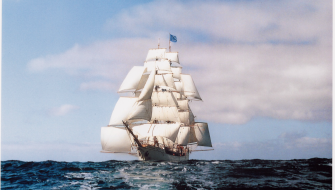
2020: Sailing in covid times – the Epic voyage
In 2020, EUROPA embarked on a remarkable non-stop sailing voyage, leaving Ushuaia on March 27th in a world that was closing down due to COVID. With only her core crew of 11 women and 8 men, who were unable to leave the country by plane, the crew represented EUROPA’s international spirit with sailors from 11 different nationalities. After covering 10,000 nautical miles and following the traditional sailing routes, she arrived back in her home port of Scheveningen on June 17th completing an extraordinary 81-day quarantine journey at sea.
2024 - beyond: The legacy of Bark EUROPA
From her early days as a lightship on the river Elbe to her role as a sail training ship, first in European waters and now across the world’s oceans, Bark EUROPA’s story is one of transformation, resilience and the enduring spirit of adventure.
Bark EUROPA’s legacy extends far beyond festivals or famous voyages. As a sail training vessel, she has had a lasting impact on the lives of those who have sailed with her. For many, working as part of EUROPA’s voyage crew is a life-changing experience, offering the chance to develop not just technical sailing skills, but also teamwork, resilience and an understanding of the powerful connection between people and the sea.
